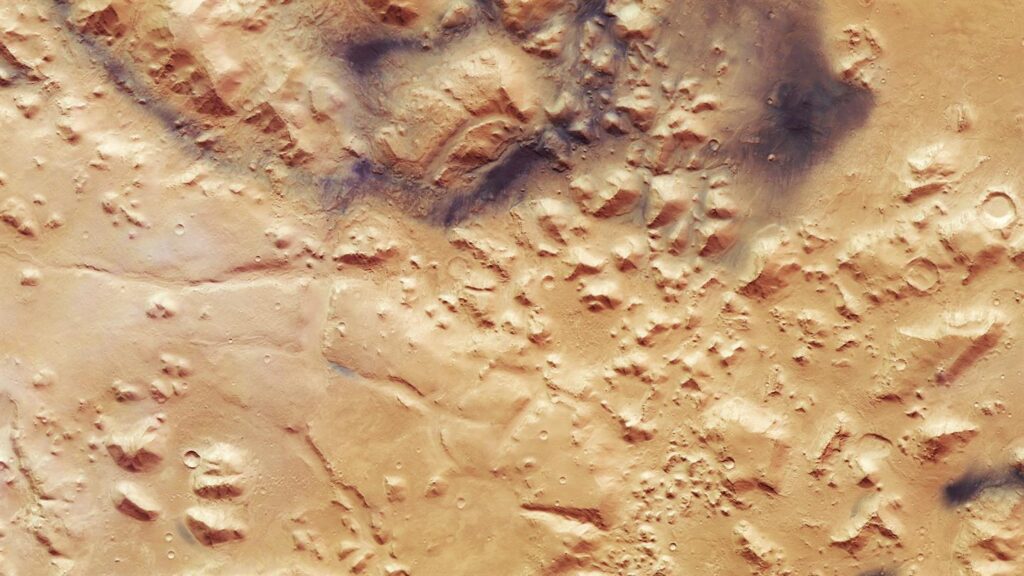The European Space Agency (ESA) has published an animation based on data collected by the Mars Express mission. It allows you to imagine what a flight over the furrows of the Red Planet would look like.
Mars has a very diverse terrain. On the planet, you can find huge craters, supervolcanoes and polar caps made of carbon dioxide. And also, there are a huge number of different faults and furrows on Mars, starting from the gigantic Valles Marineris and ending with Angustus Labyrinthus.
The presented animation demonstrates one of these regions, known as Nili Fossae. It consists of parallel depressions hundreds of meters deep and several hundred kilometers long. They stretch along the eastern edge of a huge impact crater called Isidis Planitia.
The video was made based on data collected by the high-resolution stereo camera (HRSC) of the Mars Express spacecraft. First, the virtual camera moves towards the large depressions in the north, and then turns and moves south. In the final part, it rises to a great height and we can see Jezero crater, which is the landing site of the Perseverance rover.
The depressions of Nili Fossae are actually grabens. Such structures occur when the ground, located between two parallel faults, ruptures and crumbles. Most likely, their formation is associated with the subsidence of the Martian crust after the formation of Isidis Planitia. This is indicated by the fact that similar faults are located on the other side of the crater.

In recent years, scientists have focused on Nili Fossae because of the impressive variety of minerals found in the area, including silicates, carbonates and clays. Such compounds are formed in the presence of water, which indicates that in the distant past this region had a humid climate. Most of the soil here was formed more than 3.5 billion years ago, when water was abundant on Mars. Scientists believe that it flowed not only on the surface, but also under it, forming underground hydrothermal flows that were heated by ancient volcanoes.
Due to the fact that this place can tell us about the ancient and water-rich past of Mars, Nili Fossae was considered as a possible landing site for the Curiosity rover, but in the end it was sent to the Gale crater. But the Perseverance rover landed, although not on the territory of Nili Fossae, but relatively close.
Earlier, we talked about how spacecraft photographed Inca City.
According to ESA


